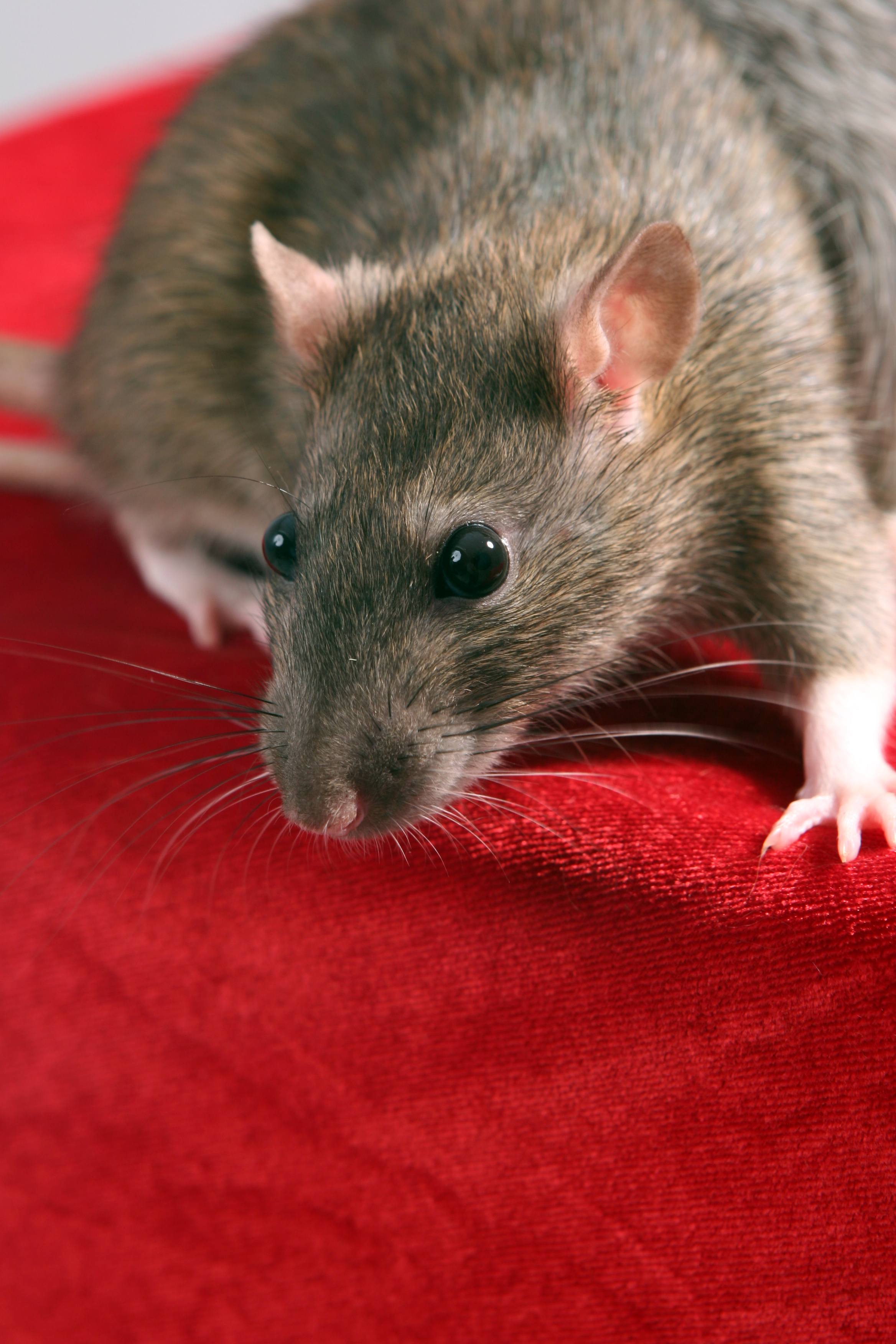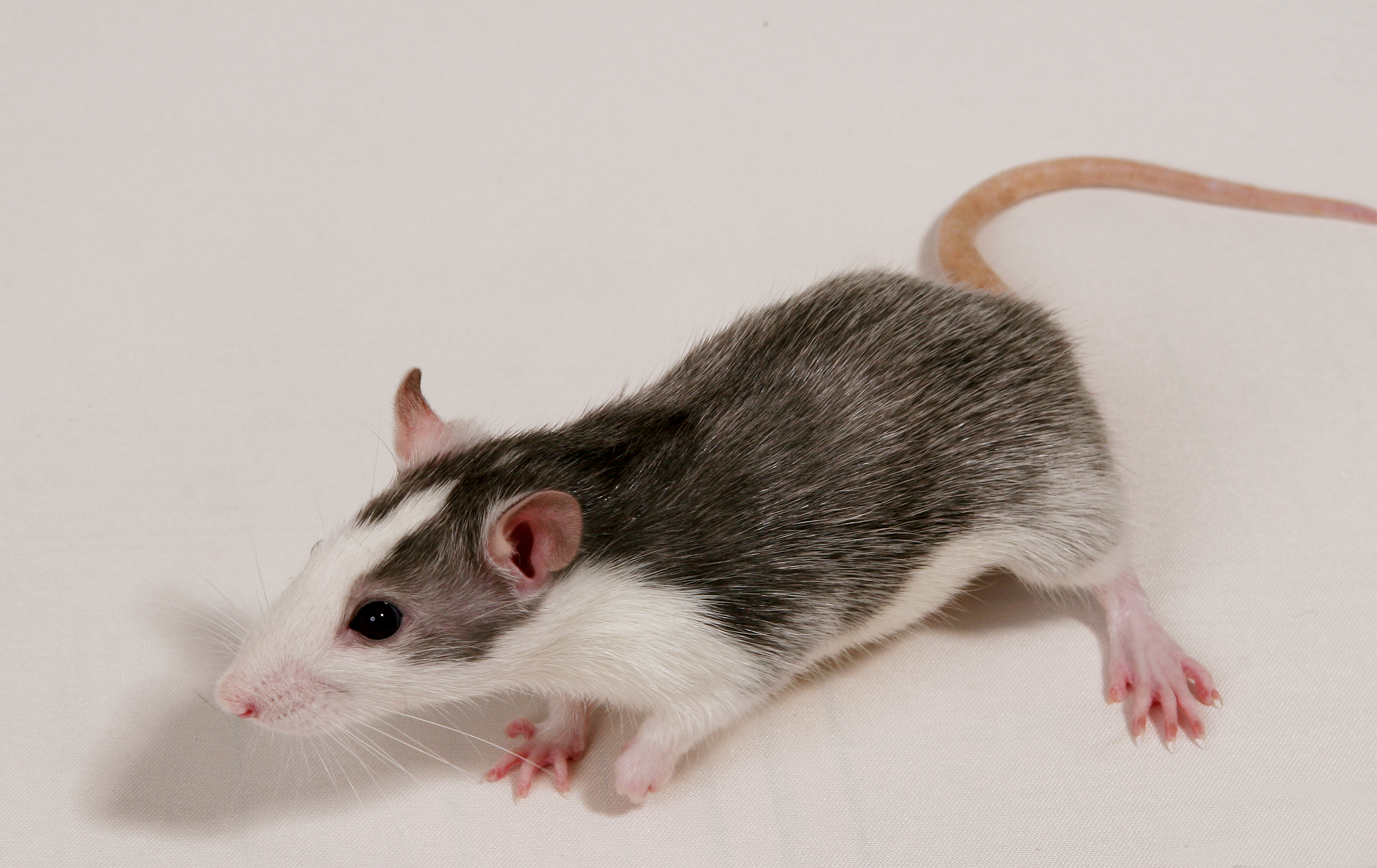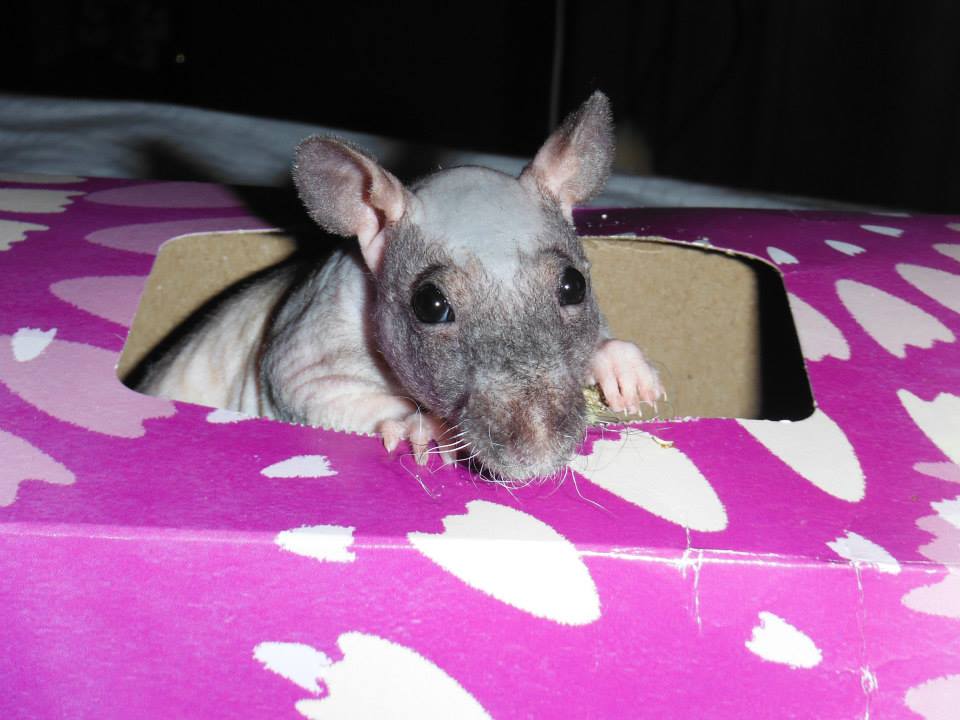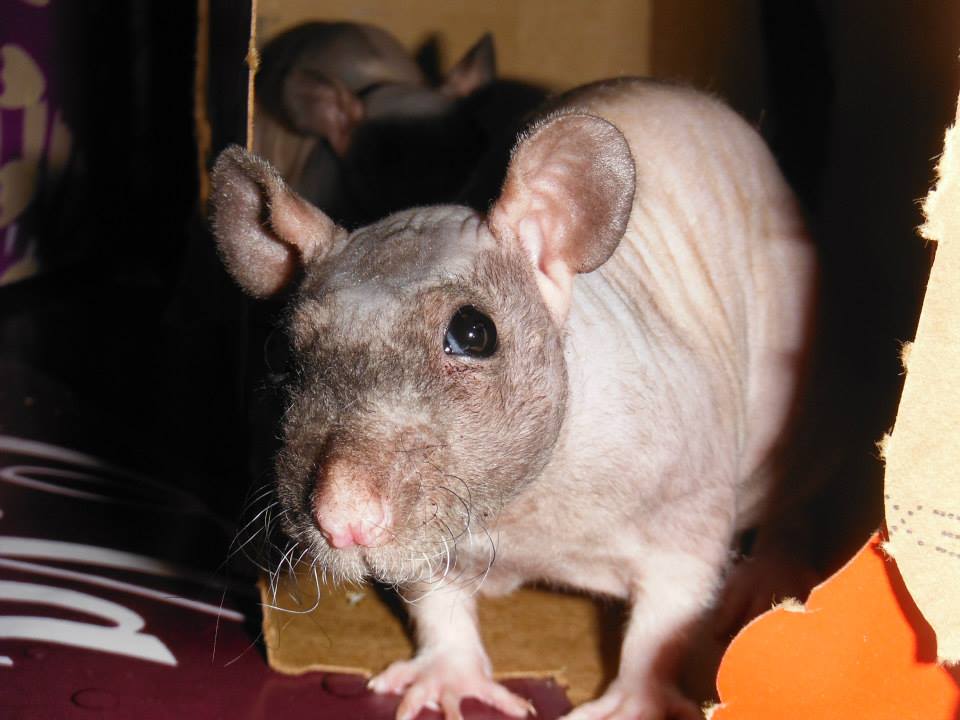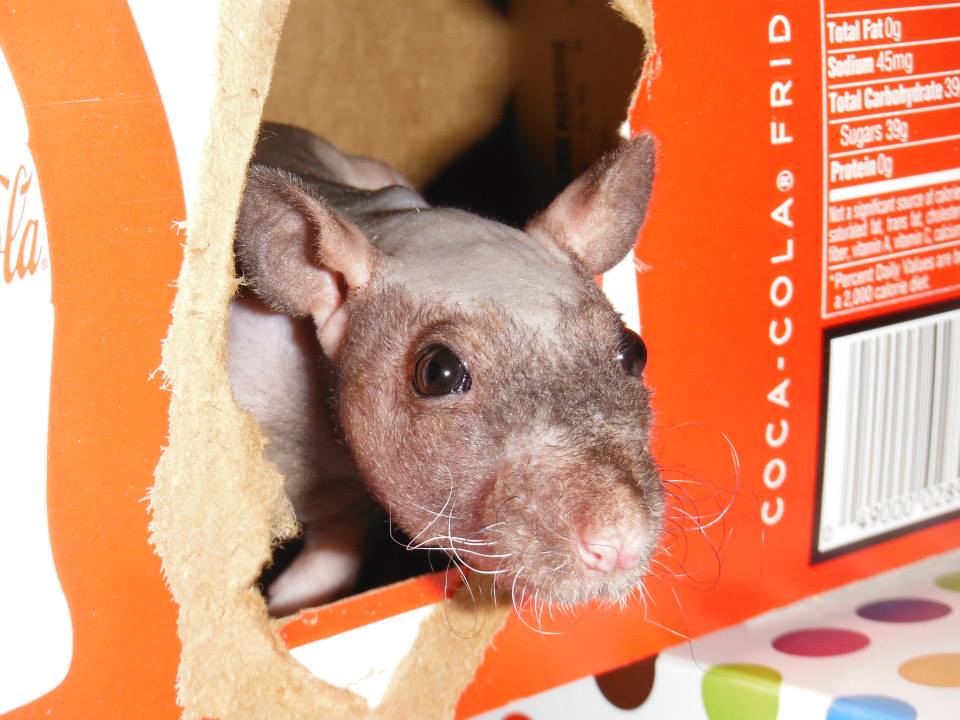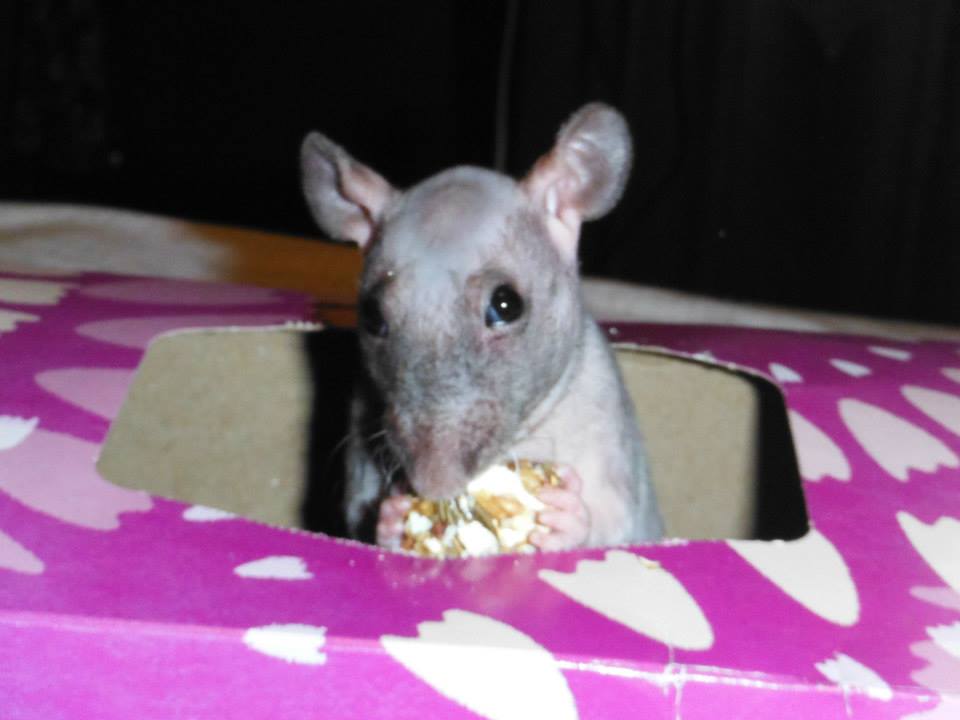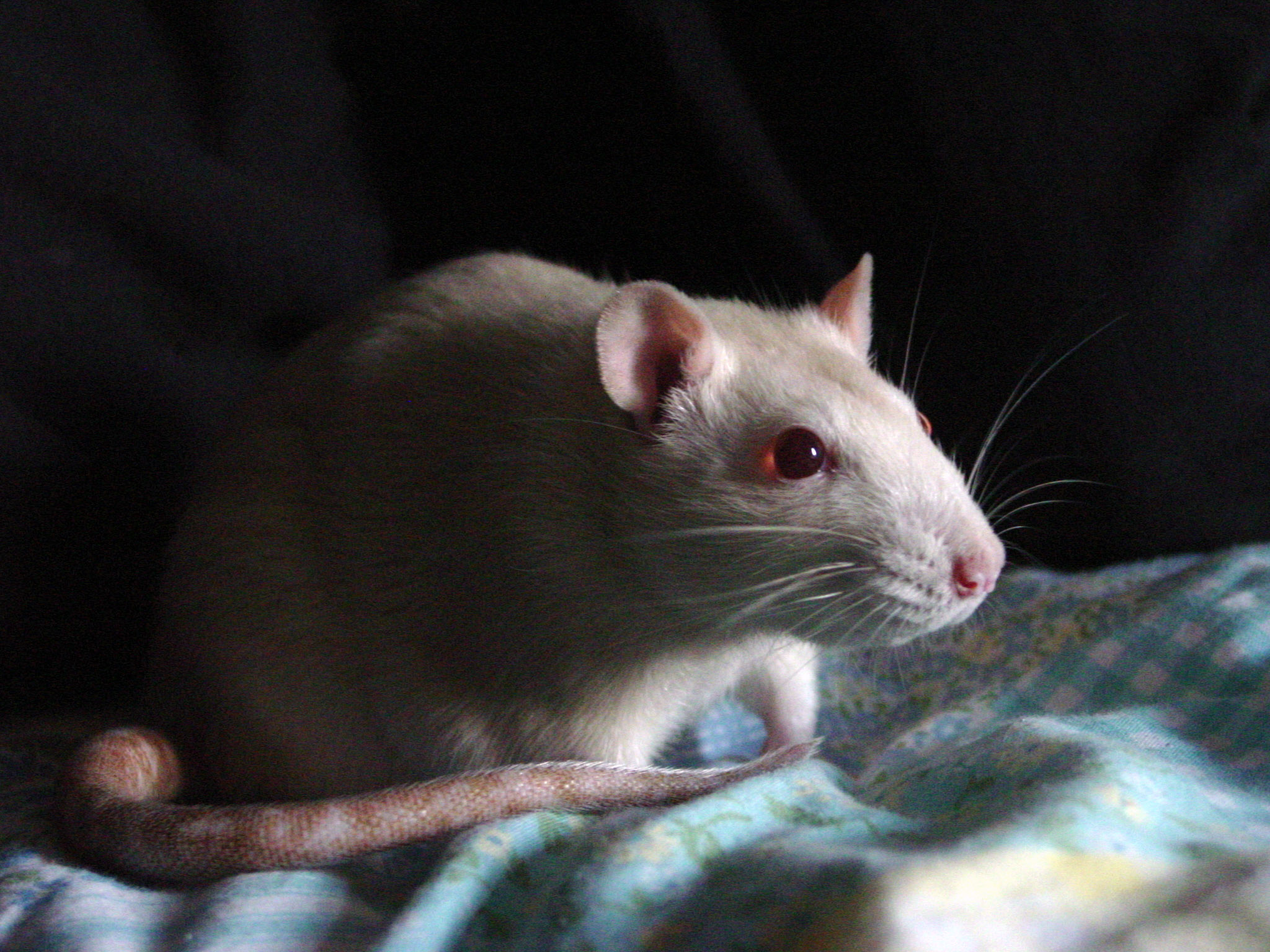Take Him Back–How To Tell Your Pet Rat A New Brother Is On The Way
Several months ago a friend of ours on Facebook made an announcement. The female rat she had recently rescued had just delivered a surprise litter of babies, which she wasn’t prepared for and couldn’t keep. I got in touch right away and said that we already had two boys who were old enough to be ready for introductions to new “siblings.” Plans were made on her end, but plans were also made on ours.
How To Introduce Your Pet
Before I continue with this article, I am going to pause and point out that any time you are introducing pets to one another, (same species or otherwise) you MUST know your animals inside and out. If you have a pet who is very territorial or grumpy, even with you, tossing them another “friend” to play with isn’t necessarily a good idea. Read your pet’s body language, understand their feelings. Consult an expert if you are uncertain what path you should take. Do NOT rush in to animal introductions. Be prepared for this process to take a lot of time, if necessary. Keep yourself and your pets safe and happy, and do not be afraid to admit that your pet might want to be an ONLY pet. Sometimes that happens and it is perfectly okay, just remember that YOU will need to give your pet that extra companionship they would normally get from one of their own kind.
Now, back to the story at hand. I am certain that right now there are some people who have never owned small pets before, or who have gotten their pets at a pet store, and are going to be jumping in their seats, shouting, “Don’t put them together! The pet store said not to!” Here’s the issue with that, the store is only half right and they are saying what they are saying mostly for their own protection. A lot of small animals are colony type animals, meaning that like fish, they prefer to be in a large group of their own kind. All animals, however, are territorial and in the wild these colonies would all be members of a family, watching each other grow up and get old, they would not be surprised to have a new litter of babies suddenly show up among them. For those animals, that is the natural order of things. Your two, innocent little darlings at home are living in ignorant bliss inside of their nice, spacious cage and aren’t at all thinking that suddenly they are about to be jumped on by a pair of rambunctious youngsters.
Your Pet Rat and Territory
Well then, why worry about the age difference? Why not just throw all the rats of the same age into one group together? Here comes that territorial nature again. Someone will want to be the dominant personality. Just like in your old high school, there’s a class clown, but there’s also the class president and the homecoming king and queen. One of the best things that you can do for your rats is to stagger their ages, so that they will avoid the more angered disputes and settle more easily into a life together. You won’t have four rats of the same age all establishing territory and duking it out to see who is going to be top dog. The older rats are older, the younger rats will get that and there will be a certain amount of respect there, in most normal circumstances. Also, you want to think about what will happen when your elderly rat passes. He or she will have been survived by a brother or sister, who will be all alone. This is NOT the time to rush out and thrust babies at them. Put yourself in their shoes. Would you rather be comforted during a time of loss by your closest friend or a random, energetic stranger off the street?
Our two rats, North and Whisper have been with us a while. They aren’t elderly, but they aren’t spring chickens, and for all of the reasons above, it was time for us to consider young siblings for them to spend time with. Then along come Phobos and Deimos, fate plopping them practically into our laps. The introduction process that we use is fairly simple, though it sounds very complex, and I will break it down into easy to follow steps.
Again, I will remind readers that every animal is different and what works for us might not work for you. Constant supervision is key. We suffered two accidental and terrible losses in our household in two separate instances; once when a male I was rat-sitting for attacked and killed my little baby while I was diligently watching them and was certain I had kept enough barriers between them, another time one of our extremely elderly females attacked and killed a newborn who had worked his way out of the transport container we use when we are cleaning cages. (The elderly rat was not the mother and we are certain she was also not in her right mind, as this kind of behavior wasn’t at all normal for her.)
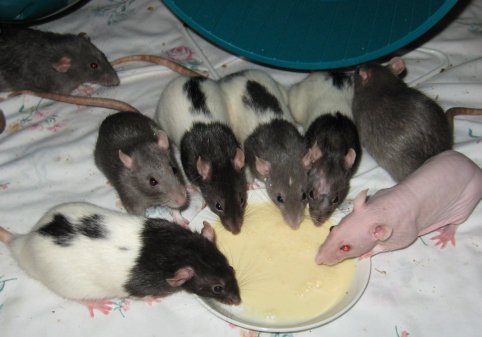
Step 1: All the Medical Stuff
New animals to a household bring with them new germs. It’s the same idea behind everyone saying that teachers have a boosted immune system because they are subjected to more junk throughout the year or that kids going to a new school are going to get sick within the first weeks because they are bound to catch every bug around. New rats into a building should be kept under a strict quarantine, even if you know exactly where they came from. This prevents those germs from spreading and making everyone sick all at once, but it also helps them realize something is going on. We typically go through a four week quarantine period, but in the case of Phobos and Deimos, we ended the strictest part of the quarantine a little earlier, as we had been watching them grow as babies and were well aware of their health.
During this step you want to have a separate cage in a separate room, where there will be no chance of someone sneezing and the germs spraying across a distance to the other cage. If you handle one pair, go and change your clothes, wash your hands, then hold the other pair. It sounds extreme, but they are small steps to take for preventing the spread of any kind of illness. Keep in mind, some illnesses common to rats will NOT show symptoms for three or four weeks. You will also want to be certain that your new rats have a totally different play area, not only because of germs, but because of territory, which we will discuss further along.
Step 2: Listening, Smelling, Understanding
Once we go through the quarantine process, I always test how the older rats will handle having the new ones in their lives by letting them smell me after I have handled the younger ones. The older rats are used to me smelling like strange people, since I am a teacher and come into close contact with over 50 preschoolers every day. They are also used to smelling other animal smells on me, such as my sister’s dog or my friend’s cat. These new rats are just strange new smells to them. Oh, they’re rat smells, to be sure, but they’re only smells. If one of my older rats begins to fluff his or her fur or display other signs of being angered or aggressive when encountering these new smells, I know that this process is going to take a lot longer than normal, or be impossible all together. In this stage separation is still very important, as is the play spaces having no overlap. Territory is still very important. This phase doesn’t have a time frame, it differs for each rat, with Whisper and North, it lasted only a day or two, as we were certain that these two had already figured out we had other rats in the house. (A story for another time.) Neither one much seemed to care that we smelled of strange rats, so we skipped along quickly to the next phase.
Step 3: I See You, Stranger
This step also doesn’t last very long in our household and I have never met anyone who uses steps 2 and 3 in their introduction training, but I prefer to walk each pair past the others a few times before formal introductions are made. This little walk consists of picking up one pair, walking into the other room, which will smell of the other rats and is clearly their territory, letting them encounter the cage at a distance and listening to me talk to the new rats. We then walk on past the cage, return to whatever we were doing and the pair I am holding gets high praises and attention. This is the “yes you have a baby brother, but I still love you” treatment. Any older sibling knows it. And while I have no physical proof that it does any good what so ever, it certainly doesn’t hurt anyone. It also provides another chance for you to see how your rats will react to each other. If there are any signs of aggression, you will be aware without having put anyone in danger.
Step 4: We’re Not In Kansas Anymore
You have just spent a month in isolation and a week or two of checking each other out at a glance… now it’s time to explore Strange New Worlds. Yes, you read that exactly right. You have to find yet ANOTHER territory for your rats. This MUST be a place where neither the old or new rats have ever spent much time before. It isn’t a play space, it’s a NEUTRAL territory that is FREE AND CLEAR of all toys. Sometimes it is helpful to have a dish of soft oats, baby food or yogurt out as a distraction, but make sure that it is something your rat can not run away with. They have to eat it out of the dish. Be careful to use the food only if you know that your rats aren’t going to fight over it. If anyone starts to look angry or fight over food, remove it IMMEDIATELY.
In our house the bathtub is the place where we get down and dirty with introductions. We put soft towels down to cover the slick bottom and make it comfortable, then put one rat at a time into the new area. You must do this slowly and in my opinion, it always helps to start with the calmest of your rats, the one you trust the most to set a good example for the others. His vibes will help set the pace for the others to follow. For us, this was North, so he got to wander the tub first, followed by his brother, Whisper, and then Phobos was introduced, followed by Deimos. We already knew there would be no fighting over the food dish, so we used the yogurt to see how they would handle sharing and handle being in close proximity to each other in a free setting. In this case, everyone was so curious about the bathtub no one really bothered anyone else.
This phase went on for three days with these four rats, we have had it last longer for some and shorter with others. (Yet another story for another time.) When the neutral territory test is completed, we introduce the older rats first into the new rats play space, for a day or two, then put everyone together in what is the daily rat play area. They are still living in separate cages for a week or so in this process, which gives the older rats a break from the high energy youngsters, but also gives the younger ones a break from being worried all the time about larger rats being upset at them. We start introducing the new rats into the routines: outside-of-cage time in the morning, while I am getting ready for work, outside-of-cage time in the afternoon and evening, when I am home from work. Within a week or so of this process, we will be ready to put Phobos and Deimos permanently into the big cage with North and Whisper. I always plan for that day to be a day when I am home for the entire time and can be sitting in their room with them for every minute they are in the cage together – just in case. Typically, though, that’s a precaution you don’t need to take, because you have taken all the rest and you will know your rats well by this point, just as they will know each other.
Younger Rats Show the Older, Older Rats Show The Younger
The whole process of introducing new pets to old pets sounds far more complicated than it is, but each and every step is worth the effort, when you see your happy rats all snuggled up together inside their nesting box or watch one of the young ones teach the older one how to get into the hammock and convince him that he really DOES like it. Of course, you might end up like we did and have one of the older rats show the younger two how to steal the food dish from where it belongs and drag it into all kinds of nifty hiding places inside the cage., but in the end it’s all worth it. After all, as my father always said; “How can you not love those little faces?”
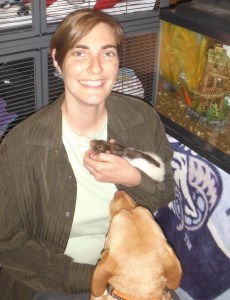 Mirrani Houpe, our Small Animal Editor, has had rats since she took home her first little boy once they both completed the second grade. Since that time she has purchased, rescued and bred many kinds of rats, from many backgrounds. She may not be a vet, psychology major, or scientist, but her babies have her very well trained when it comes to how to care for them. She is constantly working with her family’s veterinarian to come up with new and innovative ways to love and care for the most often misunderstood rodent in the pet world. You can e-mail her at mirrani@yourpetspace.info
Mirrani Houpe, our Small Animal Editor, has had rats since she took home her first little boy once they both completed the second grade. Since that time she has purchased, rescued and bred many kinds of rats, from many backgrounds. She may not be a vet, psychology major, or scientist, but her babies have her very well trained when it comes to how to care for them. She is constantly working with her family’s veterinarian to come up with new and innovative ways to love and care for the most often misunderstood rodent in the pet world. You can e-mail her at mirrani@yourpetspace.info

